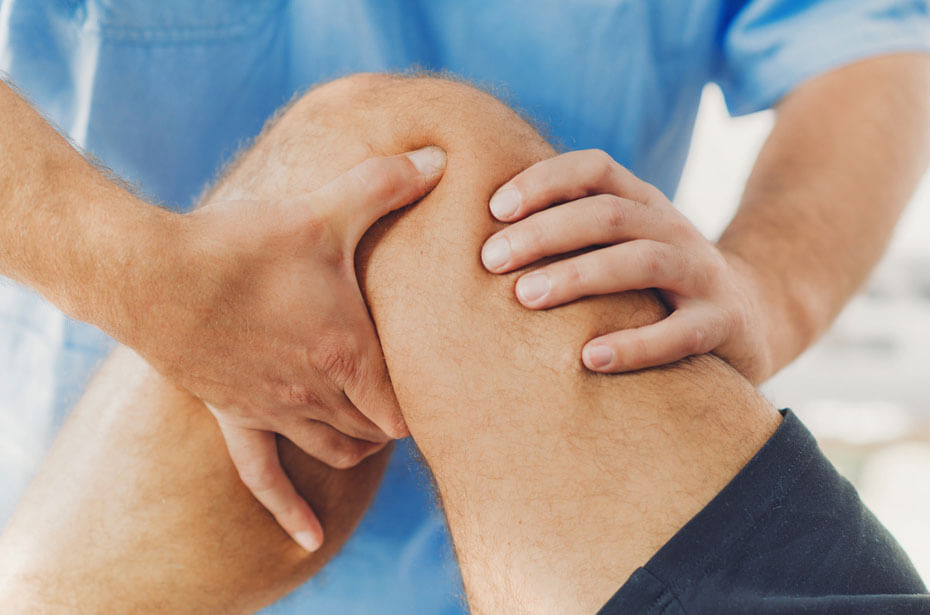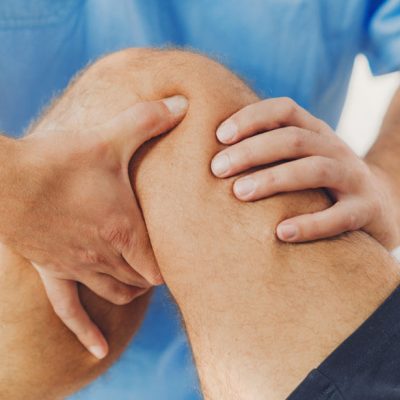The knee plays a major role in our ongoing movement, controlling the flexion and extension of the lower part of our leg, helping us walk, run, and play. Our knees endure a lot, but thankfully, they don’t have to do it alone. There’s a whole network of supporting muscle, bones, cartilage, ligaments and tendons that aid the consistent movement of our largest joint.
The role of the knee (past flexing the lower leg) is to provide steadiness while relying on the strength and stability of its adjacent joints. The best physical therapy and rehab exercises for knees have an awareness of this network and aim to promote the health of the surrounding muscles, as well as the ankle and hip joints that also need supportive strength.
Knee rehab exercises work best when they strengthen & stabilise muscles that cross the knee and either the ankle or the hip joint. This is so the system is strengthened together and reduces the stress put on the knee during recovery. For example, at BodyMotion, we have a Knee and Hip Rehabilitation Mobility Action (KHARMA) program which strengthens the main components of the region together. There is training you can incorporate on your own, too, and we’ll discuss our seven best exercises for knee stability below to arm yourself with a comprehensive recovery toolkit.
Our 7 Best Exercises for Knee Stability
Lateral walks
To get into position for lateral walks, connect your ankles with a theraband, keep your knees over your ankles and slightly squat. Putting weight on your heels, step to the side with one leg and follow with the other once the first has landed. While walking, focus on keeping the outer hip stable and maintaining constant tension on the resistance band.
Make sure to select a band with the right tension for your level of strength, ensuring you don’t overstress the hip. A great starting session is to take ten steps in one direction before switching to the other side for two sets each.
Lunges
As well as being a staple workout, lunges are excellent exercises to stabilise knee components because they can be done forwards, backwards and side to side, providing comprehensive strengthening. To perform a lunge, start standing with your legs hip-distance apart and take one large step forward, keeping the other leg in the initial position. Then, keeping your torso straight and core engaged, bend your knees and lower your body to the floor.
Once your knee taps the floor, slowly straighten your knee and raise your body again. Bring your back leg forward and take a large step with it to begin your second lunge. It’s important to make sure your toes are aligned with your knees to perform lunges safely. For a starting session, try to complete ten lunges for two sets in one direction and try a different direction next time.
Straight leg raises
Straight leg raises help isolate and strengthen the muscles of one leg while the other offers stability. Lying on your back, keep one leg straight and the other bent at 45 degrees with its foot planted on the floor. Raise the straight leg with control until it reaches the height of the bent leg and then slowly lower it back to the ground.
You should start to feel your hip flexors and quads working hard to support the raised leg, which is a valuable part of physical therapy to strengthen knee joints and empower the muscles throughout your leg. Try to perform two sets of ten leg raises.
Bridges
A bridge exercise begins in a similar position to straight leg raises, but with both legs bent with their feet flat on the floor. With your feet about hip distance apart, raise your hips and pelvis into the air, squeezing your glutes and putting weight into your heels. When your hips make a straight line from your knees through to your chest, you’ve reached the ideal height and position. You can then lower your pelvis slowly, touching the ground before raising it into another bridge. Bridges work your glutes and hamstrings, strengthening the supporting muscles of your knees. Try to perform two sets of ten bridges.
Step-ups
Step-ups work a combination of muscles, but they have a focus on the components around the knee joint. Step-ups are excellent knee strength and stability exercises because you can tailor the height of the box to different levels of difficulty to match where you are in your physical therapy. Stand facing the box and step one leg up, then follow with the other leg, standing up straight on the step before reversing the movement to the initial position. Keep your knees in line with your toes throughout the movement.
Try starting with a 15cm box step and increasing the height to a level you’re comfortable with, but be cautious not to overstress the knee. The step shouldn’t ever be higher than your knee in a standing position. You can try to perform 20 step-ups with one leading leg and then switch legs for a well-rounded session.
Wall squats
You’ll need a stability or exercise ball for this part of physical therapy to strengthen your knee. Wall squats encourage stability in the legs and knee joint as they require you to maintain a high level of control as you use your leg muscles to lower your body to the ground.
With your back sandwiching the ball against the wall, step your feet out and keep them about hip-distance apart. Squat down and bend with your knees and hips as your body lowers to the ground, along with the ball. Reverse the movement to move your body and the ball back up to complete a squat. Try to perform three sets of ten wall squats.
Calf raises
Calf raises are our final favourite in our best rehab exercises for stability in your knees because of their simple requirements and effective results. You can perform calf raises anywhere you wish, even while waiting in line at the shops, which make them a powerful resource in the recovery toolkit.
Standing upright initially, move your weight to your toes and lift your heels, using your calves to help you rise. Calf raises quickly help you regain stability and balance in your knees and they focus on exercising the muscles between your knees and ankles. Repeat calf raises for a set of ten, aiming for three sets each session.
Contact Body Motion for More on Rehab Exercises to Stabilise Your Knee
For more information on the best exercises and physiotherapy to strengthen your knee, as well as our other services including sports massage, contact the experienced team of physiotherapists at BodyMotion Physio today. We can be reached by calling 03 9873 3333, sending an email to info@bodymotionphysio.com.au, or completing our online enquiry form.



